Mexico, Guadalajara, February 1986: a moment from the II Youth Engagement Encounter, an activity of Familia Mexicana, FAME, from that year.
Apostolate of Regnum Christi
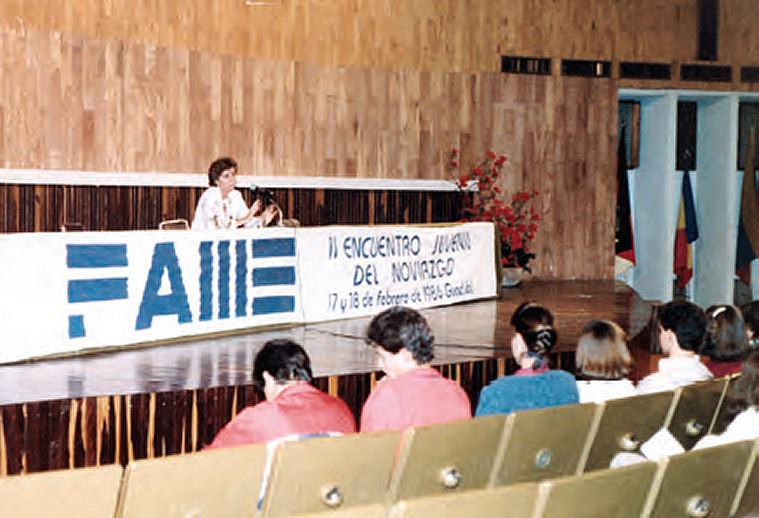

United States, Atlanta, October 1999: a moment from the first edition of the Youth and Family Encounter with an international character.

Puebla, November 1995: a moment from the first national Encounter of Full-Time Evangelizers in Mexico.
1960 – 2000
Regnum Christi and the works of apostolate
The integral Christianity proposed by Regnum Christi in the post-conciliar years soon translated for the men and women who were part of the Regnum Christi Movement into an intense apostolic work, active in all fields of society.
On the other hand, the Apostolicam Actuositatem decree of the Second Vatican Council had foreseen in 1965 that the laity should exercise “their multiple apostolate, both in the Church and in the world. In both areas, various fields of apostolic activity are opened, of which we wish to recall here the main ones, which are: the communities of the Church, the family, youth, the social realm, the national and international order.”
The text of the 1971 Manual notes this mission and explains:
“To carry out the mission entrusted by God, the Movement sets forth some objectives that must be considered as indispensable means.”
Among these is also the “creation and promotion of directly apostolic institutions.” Thus, over the years, new works emerged in various fields of apostolate, especially, as summarized in the 2004 Statutes, in the fields of education and teaching, promoting family values, women’s issues, supporting diocesan and parish life, helping seminarians and diocesan priests, carrying out evangelization missions, and activities that lead to a Christian life, such as spiritual exercises, retreats, and conventions, the dissemination of Catholic doctrine, social communication media, and material assistance to those in need.
In these fields, some of the main works of the Movement are:
-
FAME (Familia Mexicana), an initiative born in 1968 aimed at safeguarding family values.
-
ANSPAC (Asociación Nacional Pro Superación Personal A.C.), launched in 1974 by a group of women from Monterrey to elevate the human level of people by offering them various formation courses.
-
Consultants of Alfa Omega and Escuelas de la Fe, a Pontifical Institute recognized by the Congregation for the Clergy, for adult catechesis and the formation of teachers of the faith, both inaugurated in 1976 in Mexico City.
-
Gente Nueva, founded in 1984 by a team from the youth section in Mexico City with the purpose of promoting human, moral, and religious values.
-
Connection Communication Corporation, later called Hombre Nuevo, emerged in the same year, 1984, in Los Angeles, United States, which was the first apostolic work of Regnum Christi in the field of social communication media.
-
Fundación IUVE, founded in 1987 in Spain with the aim of acting in the field of social inclusion.
-
Generación Empresarial, created in 1988 to guide young entrepreneurs toward the ethical principles of Christian humanism.
-
Evangelizadores de Tiempo Completo (Full-Time Evangelizers), a project launched in 1989 that seeks to form people dedicated full-time to evangelization for parishes and dioceses with few priests.
-
Juventud Misionera, which emerged from the testimony of a group of young people from the movement in 1986 and has since 1993 gathered thousands of people in popular evangelization missions and has flourished in many cities and countries.
-
The NET program, started in 1997, aims to make every family a domestic Church.
1996
Missionary Youth and Family Encounter in the United States
The Youth and Family Encounter was held for the first time in the United States in 1996. It is an event that helps to showcase the various apostolic activities among the members of the Movement. These encounters typically take place annually in each country where Regnum Christi is present. The first international edition was held in Atlanta, United States, in 1999. Thousands of people from different nations participated. The event served as preparation for the Jubilee Year 2000.
In practice, all the works related to the Movement represent its apostolic projection and, as a whole, they form an effective operational model due to their flexibility and capacity to adapt to the place and the cultural and social situation in which they are working. Many of these works have originated thanks to the direct initiative of their members: from the encounter with Christ that a Regnum Christi member experiences by cultivating their spiritual life in the activities of the section or team, the desire to communicate and spread the evangelical message blooms.
To all the men and women of Regnum Christi committed to the Catholic Church to spread the treasure of faith, the words that Pope John Paul II addressed to the young people of Missionary Youth in 1996 can be extended:
“Today the world needs a New Evangelization that expects much from your spiritual legacy and your generosity as young people, so that no door is closed to Christ and so that all may recognize Him as the true joy, the source of all hope, and the cause of all salvation. From Christ, more than anyone else, men and women, families, children, the elderly, the sick, the strong and the weak, are in need.”
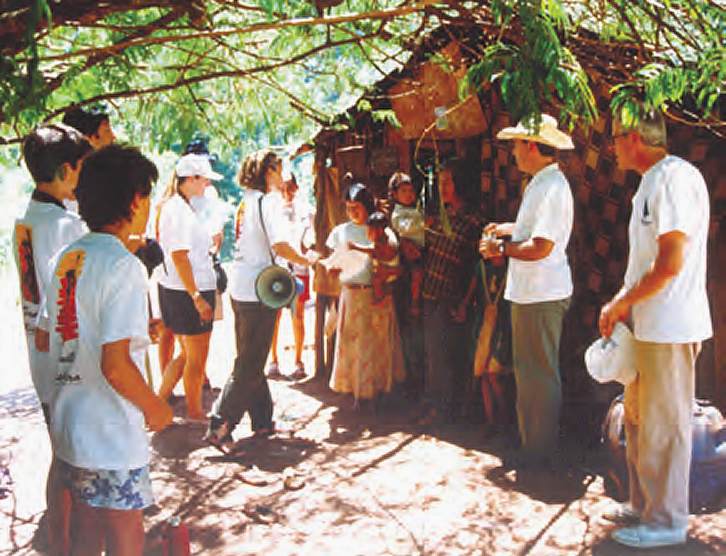
Argentina, 2002: members of Familia Misionera during an evangelization mission in the town of Catupury.
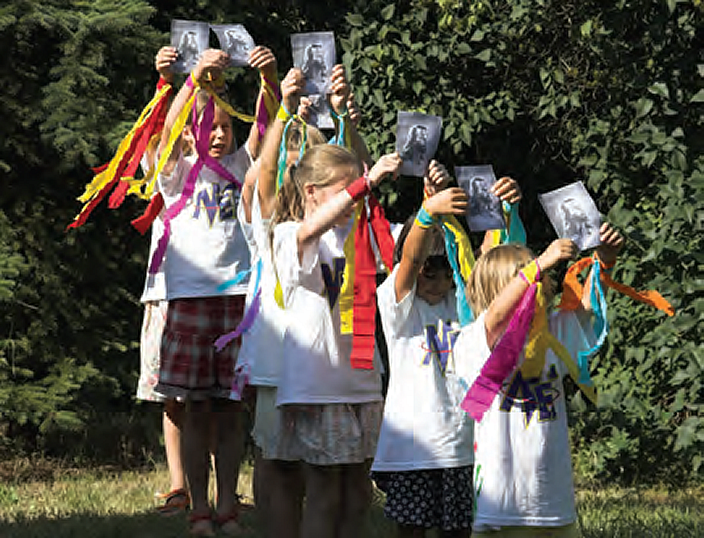
Hungary, 2007: some young women while carrying out a NET activity.
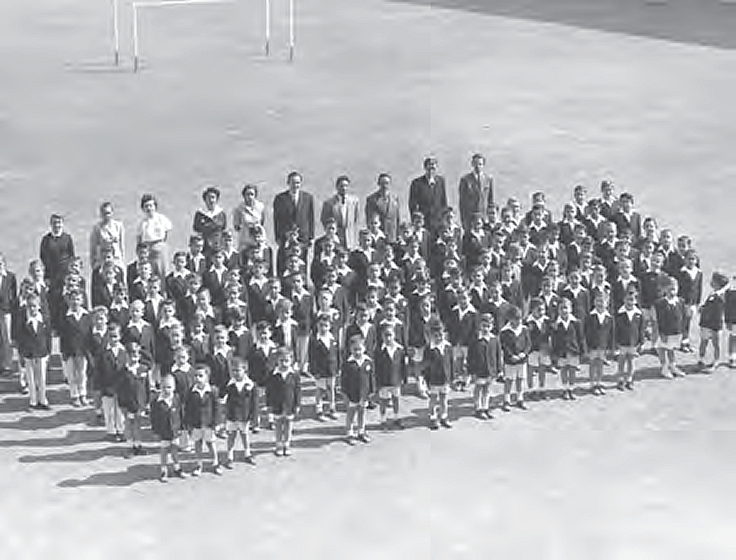
Mexico City, 1954: the first group of teachers and students of Instituto Cumbres.
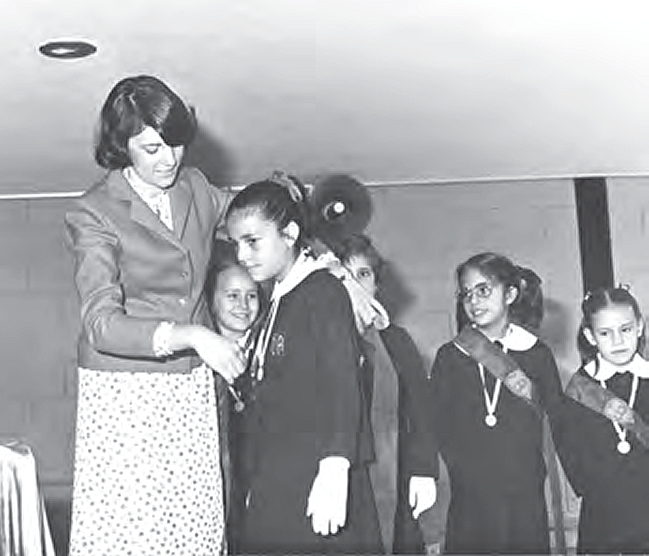
Mexico City, early 1980s: Juani Lozano, consecrated member of Regnum Christi, during an award ceremony at Instituto Oxford.
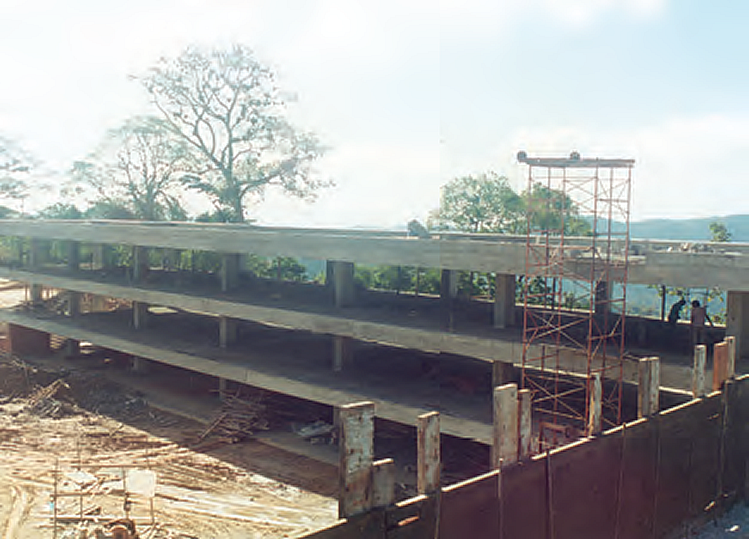
Venezuela, early 1990s: a moment from the construction work of the Colegio Mano Amiga in Caracas.

Ciudad de México: aerial view of the Universidad Anáhuac México Norte campus.

Rome, January 10, 2006: a moment from the inauguration of the first academic year of the European University of Rome, with the presence of Cardinal Camillo Ruini, Vicar of Rome and President of the Italian Episcopal Conference.
1950s and 1960s
Educational centers of Regnum Christi
Since the early years, all the institutional texts of both the Legion of Christ and Regnum Christi have proposed education and teaching as priorities in their apostolic projects.
Moreover, the popes after World War II, from Pius XII to Paul VI, insisted, through various radio messages and documents sent to different organizations, on the need to establish educational institutes, especially in Latin America. In fact, the first apostolic work carried out by the Legionaries of Christ was a school, the Instituto Cumbres, founded in Mexico City in 1954. The chosen motto for the new school was “Semper Altius”, which, translated from Latin, means “Always higher.” This motto signifies that in the formative process, one needs to walk, climb, and overcome in order to follow a path toward a transcendent goal with no limits to its development: the new man in Christ that St. Paul talks about. In fact, the name “Cumbres” also indicates this goal, and it is no coincidence that many of the schools founded since then bear the names of famous mountains and mountain ranges, such as the Alps, Everest, and the Himalayas.
In the 1960s, the educational proposal was enriched with other types of schools: in 1965, the first Irish Institute was established in Mexico City, distinguished by its bilingual education in Spanish and English, and in 1966, the first Colegio Mano Amiga was founded, created to give adolescents and young people from disadvantaged groups the opportunity to study. Later, in 1969, the first language academy, named Oak Language Centre, was opened in Dublin. All these schools already had a clear goal from the beginning: “to educate, teach, and form,” offering a personalized and integral education.
Meanwhile, the Legion of Christ had also founded the Universidad Anáhuac in 1964, which by 1968 had become a solid institution and inaugurated its new campus that same year, with its first graduating students. Over time, the Universidad Anáhuac has become one of the most prestigious private higher education institutions in Mexico. In 1981, the national government granted it the important recognition of “autonomy and official validity of studies.” In the last three decades of the 20th century, schools, academies, and universities grew significantly.
It is significant to note that many of these works were created at the request, desire, and insistence of lay faithful. In these instances, the task of leading these works has often been entrusted to members of the first and second degree of Regnum Christi, rather than to the Legionaries, consecrated men and women.
In 2000, the Universidad Interamericana para el Desarrollo (UNID) was established as an innovative proposal for Mexico, directed at the entrepreneurial world and aimed at meeting the country’s labor market needs, including “business internship” periods as part of the learning process.
To coordinate this series of institutions, the CEA (Anáhuac Educational Consortium) was created, which in 2005 took the name Centro Internacional de Formación Integral (ICIF) in English. These two organizations are associated with the Red de Universidades Anáhuac (RUA), which groups all the Catholic private universities, both secular and ecclesiastical, that share the same educational model.
The motto of this university network is Vince in bono malum, an expression of the concept of education directed toward truth and good. Its emblem, based on the image of a fabric in process, symbolically captures the work of interaction and development that characterizes education.
In 1960, St. John Paul II stated, “The flourishing of Catholic schools in the world is one of the noblest glories of the Church.” To this flourishing, the Legion of Christ and Regnum Christi have contributed with their educational efforts: by 2013, 206 educational centers had been created, including 116 schools, 13 universities, 22 Colegios Mano Amiga, 7 Oak Academies, and 48 UNID, with a total of 141,701 students.
The latest developments in this experience, which has now lasted for more than half a century, occurred in 2010 with the renewal and unification of the Anáhuac Educational Model, the approval of the RUA statutes in 2013, and the launch of the Ideario de los Colegios del Regnum Christi (Ideology of the Schools of Regnum Christi) in 2015, which defines the identity, vision of man, components of the educational community, and the elements and objectives of the formation of the Movement’s Catholic schools, aiming to inspire the pastoral programs of their educational works. This document also specifies the general mission of their works:
“Regnum Christi promotes the integral formation of apostles, who exercise a role of Christian leadership in their environment. […] The integral formation in a Regnum Christi school includes the formation of all the dimensions of the human person: intelligence, will, and affection. […] Being a new man, an integer homo or an integra mulier, means fulfilling God’s design of love, which wants us to be fully human, harmoniously integrating all the dimensions of our being along with love. It also means integrating the limits and weaknesses that everyone encounters along their journey with the project that God has for each of us.”
This section has been taken from the publication «Historia Institucional de la Congregación de los Legionarios de Cristo y del Movimiento Regnum Christi» (2015), prepared by the General Historical Archive of the Legion of Christ and Regnum Christi and published on the occasion of the 75th anniversary of the Congregation. Published in Spanish and Italian.
Texts: Salvatore Luciano Bonventre | Translations: Fr. Gonzalo Franco, LC | Selection of photographs: Salvatore Luciano Bonventre and Luigi Baldassarri | Coordination: Fr. Jaime Rodríguez, LC and Fr. Rodrigo Ramírez, LC


